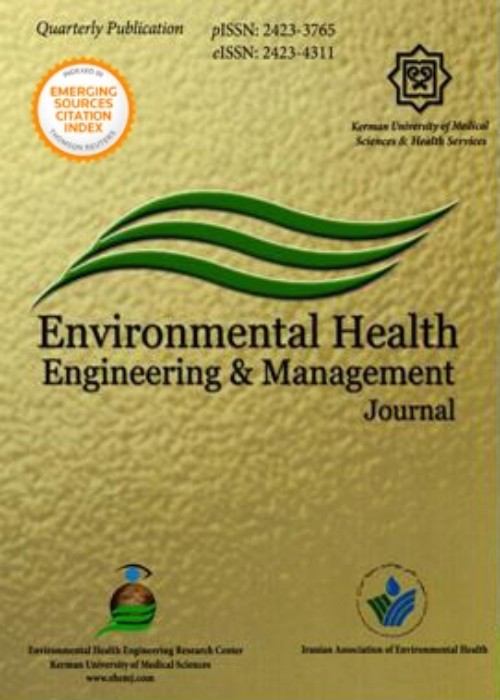Investigation of type and density of bio-aerosols in air samples from educational hospital wards of Kerman city, 2014
Author(s):
Abstract:
Background
Bio-aerosols in the air of hospital wards have an important role in the development of infections. It is important to make quantitative and qualitative estimations of microorganisms in the air of these wards as an index for environmental hygiene applicable to different hospital wards. The aim of the study was to investigate degrees of diversity and density of bio-aerosols in the education hospitals of Kerman city.Methods
This study applied a descriptive-cross-sectional methodology in the second half of 2014 in the education hospitals of Kerman city, with bed capacity of over 300. As many as 200 samples were collected from the air in different wards of each hospital using the standard method of the National Occupational Health and Safety Institute. Following collection, samples were placed in an incubator for 48 hours and then bio-aerosol detections were made for and resulting data reported as colonies/m3.Results
Results indicated that maximum and minimum degrees of bacterial density were observed in operation rooms and in the intensive care unit (ICU) of Shafa hospital. Furthermore, comparison showed that the operating room at Afzalipour hospital had the lowest level of fungal contamination, while ICU at Bahonar hospital had the highest level of fungal contamination. The emitted fungi of Aspergillus and Penicillium along with the bacteria, staphylococci and Acinetobacter had greater frequencies. The means of bacterial density and fungal density were not equal across the studied hospitals and significant statistical, difference was observed between means of bacterial and fungal density (P ≤ 0.001).Conclusion
Amounts of bacterial and fungal density were greater than those proposed in the American Industrial Health State Conference in 73.3% of the wards in the educational hospitals of Kerman city sampled in this study. Therefore it is suggested that implementation of some, necessary measures for continuous monitoring, promotion of hygienic disinfection standards, and ventilation systems are taken more seriously by stipulating regulations to control this important issue in the countrys hospitals.Language:
English
Published:
Environmental Health Engineering and Management Journal, Volume:3 Issue: 4, Autumn 2016
Pages:
197 to 202
magiran.com/p1658140
دانلود و مطالعه متن این مقاله با یکی از روشهای زیر امکان پذیر است:
اشتراک شخصی
با عضویت و پرداخت آنلاین حق اشتراک یکساله به مبلغ 1,390,000ريال میتوانید 70 عنوان مطلب دانلود کنید!
اشتراک سازمانی
به کتابخانه دانشگاه یا محل کار خود پیشنهاد کنید تا اشتراک سازمانی این پایگاه را برای دسترسی نامحدود همه کاربران به متن مطالب تهیه نمایند!
توجه!
- حق عضویت دریافتی صرف حمایت از نشریات عضو و نگهداری، تکمیل و توسعه مگیران میشود.
- پرداخت حق اشتراک و دانلود مقالات اجازه بازنشر آن در سایر رسانههای چاپی و دیجیتال را به کاربر نمیدهد.
دسترسی سراسری کاربران دانشگاه پیام نور!
اعضای هیئت علمی و دانشجویان دانشگاه پیام نور در سراسر کشور، در صورت ثبت نام با ایمیل دانشگاهی، تا پایان فروردین ماه 1403 به مقالات سایت دسترسی خواهند داشت!
In order to view content subscription is required
Personal subscription
Subscribe magiran.com for 70 € euros via PayPal and download 70 articles during a year.
Organization subscription
Please contact us to subscribe your university or library for unlimited access!



